VERY RARE! WWII D-Day "Operation Overlord" U.S. Infantry & Armored Normandy Heavily-Used Combat Map (Hand-Marked Combat Annotation on Bayeux, Coigny, and Lessay)
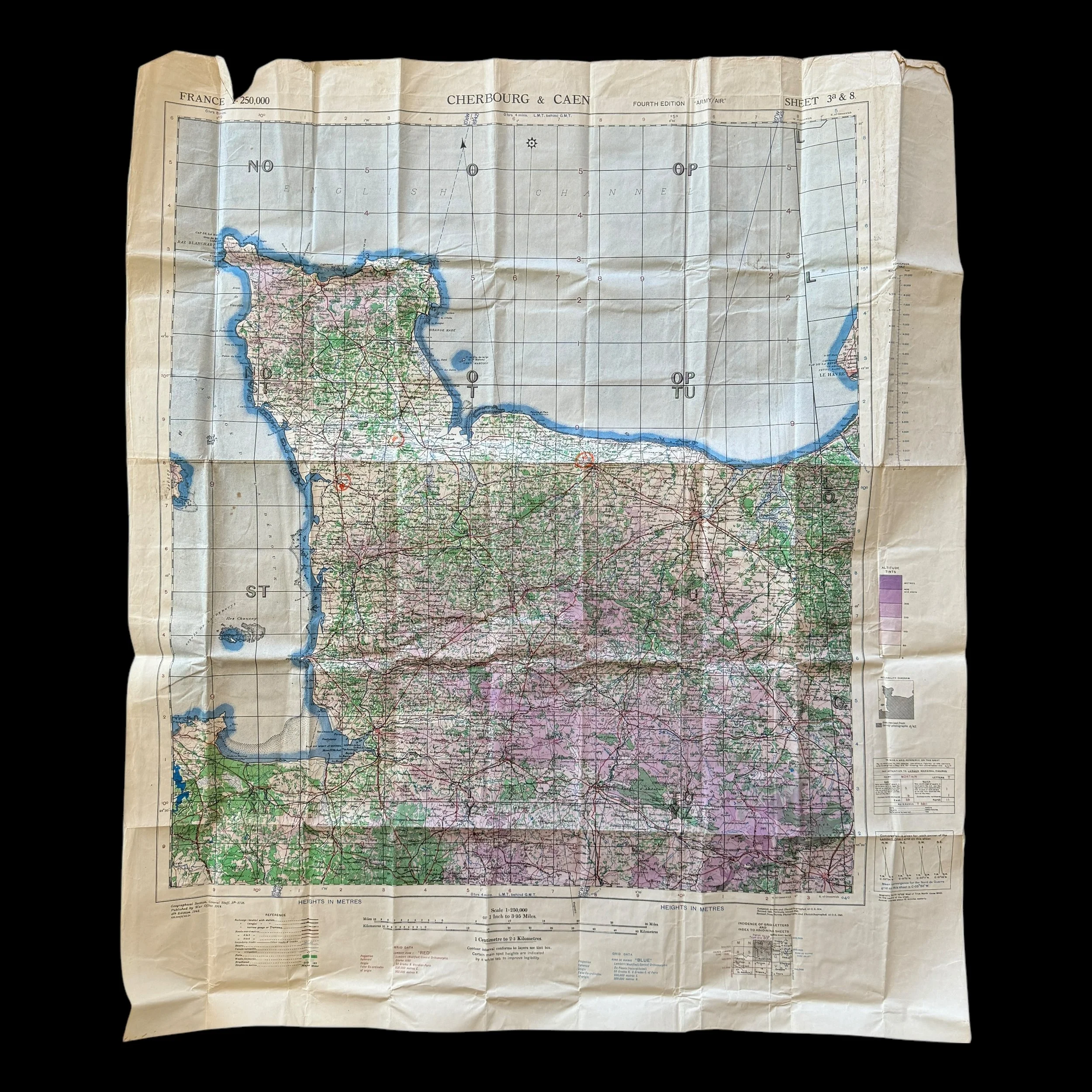
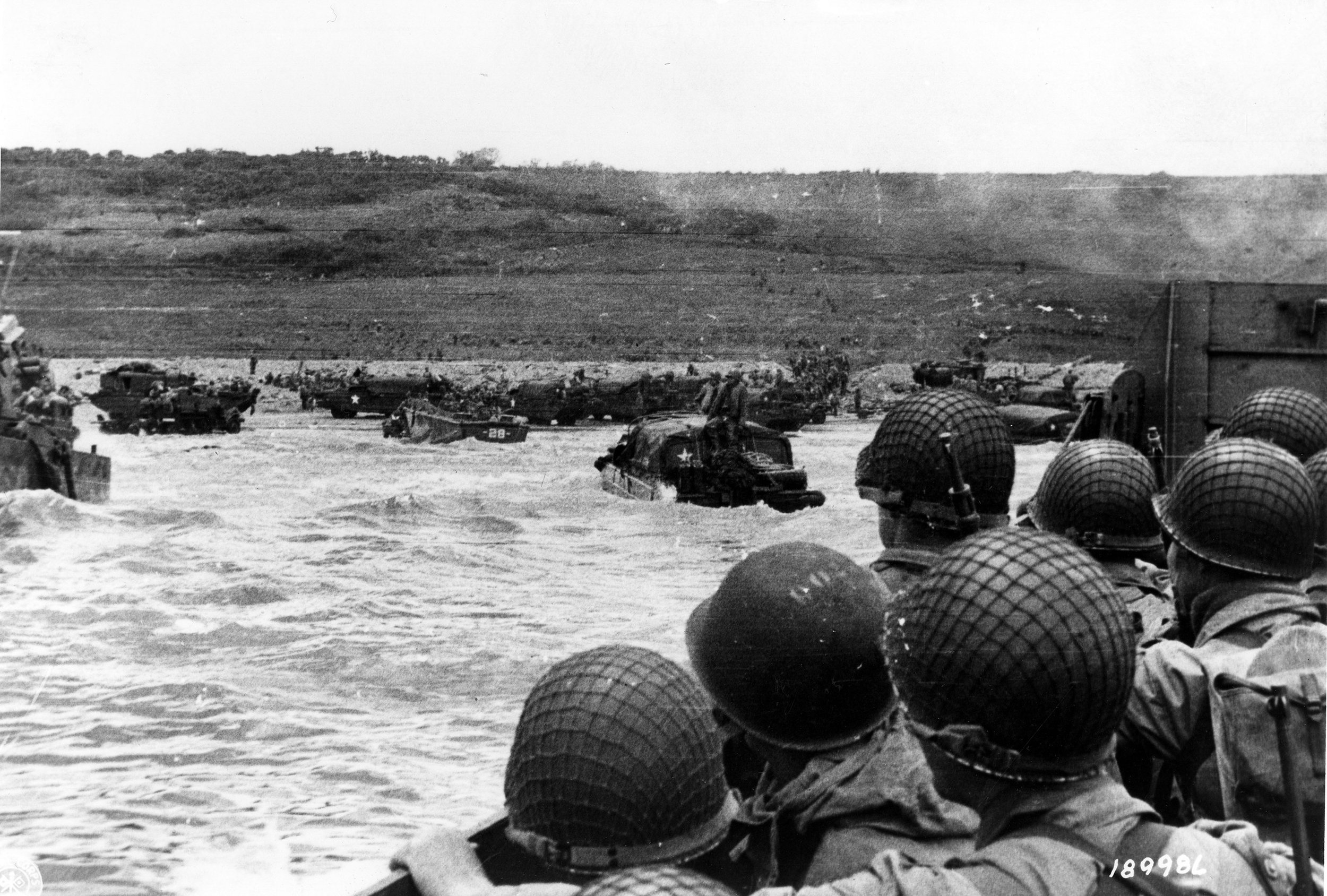
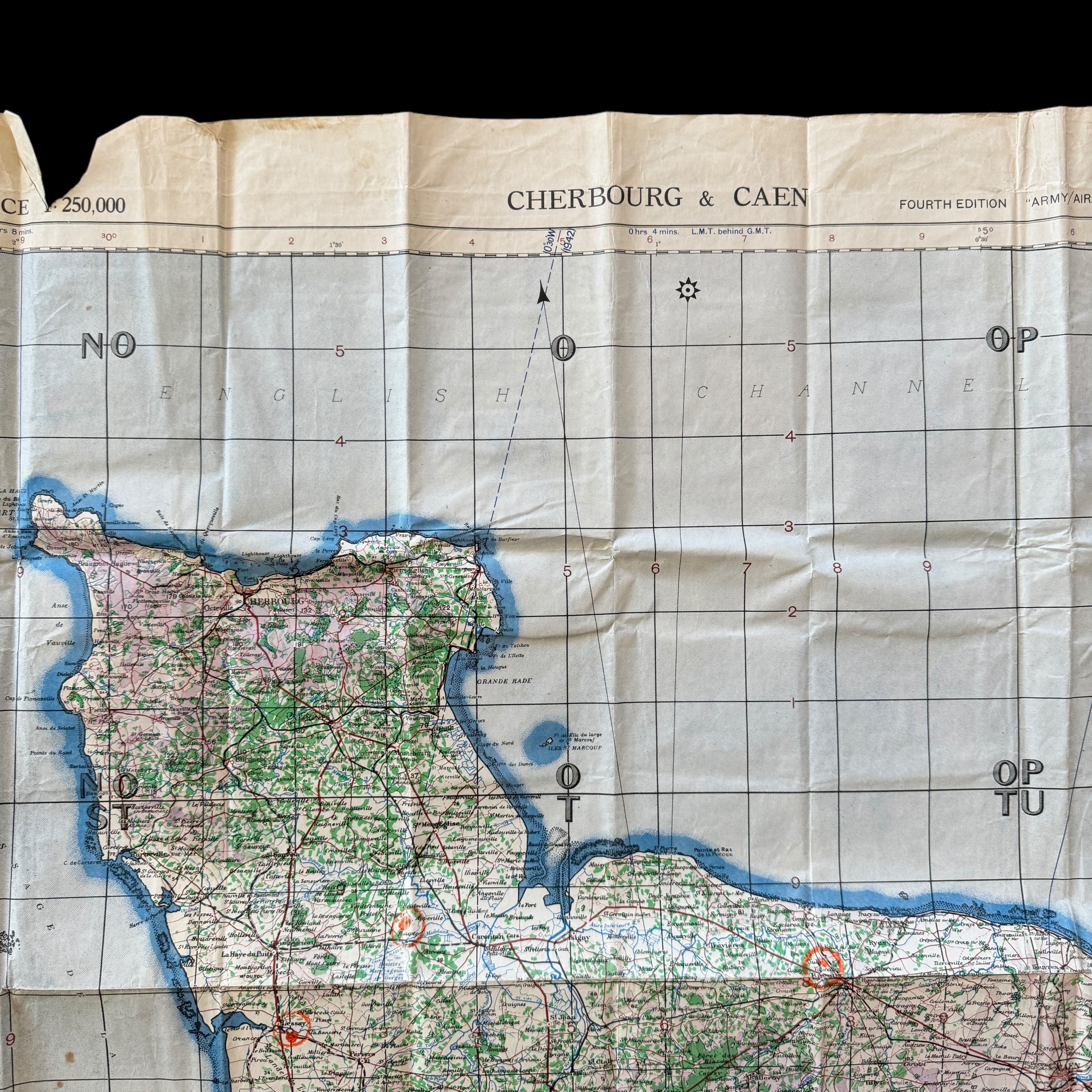

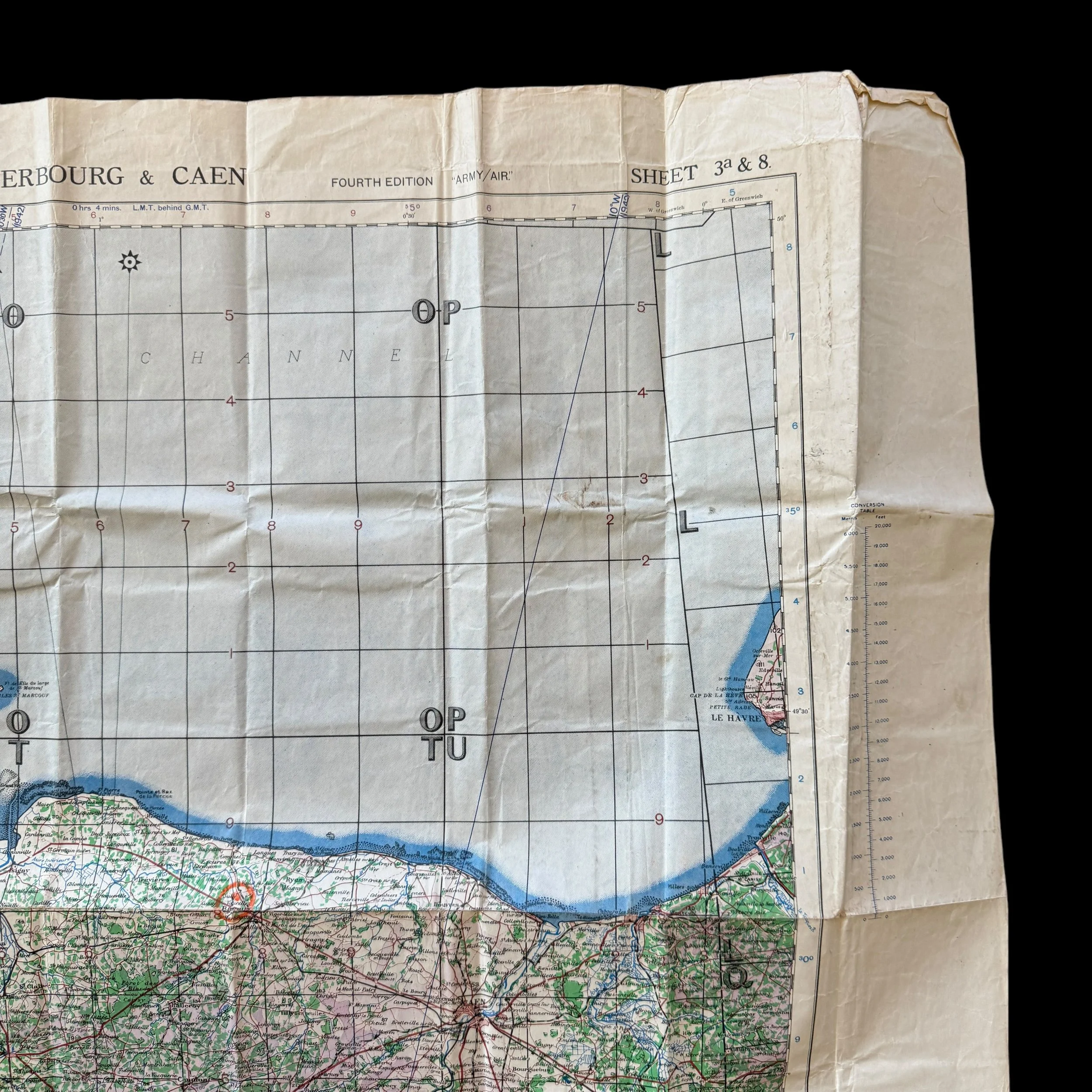
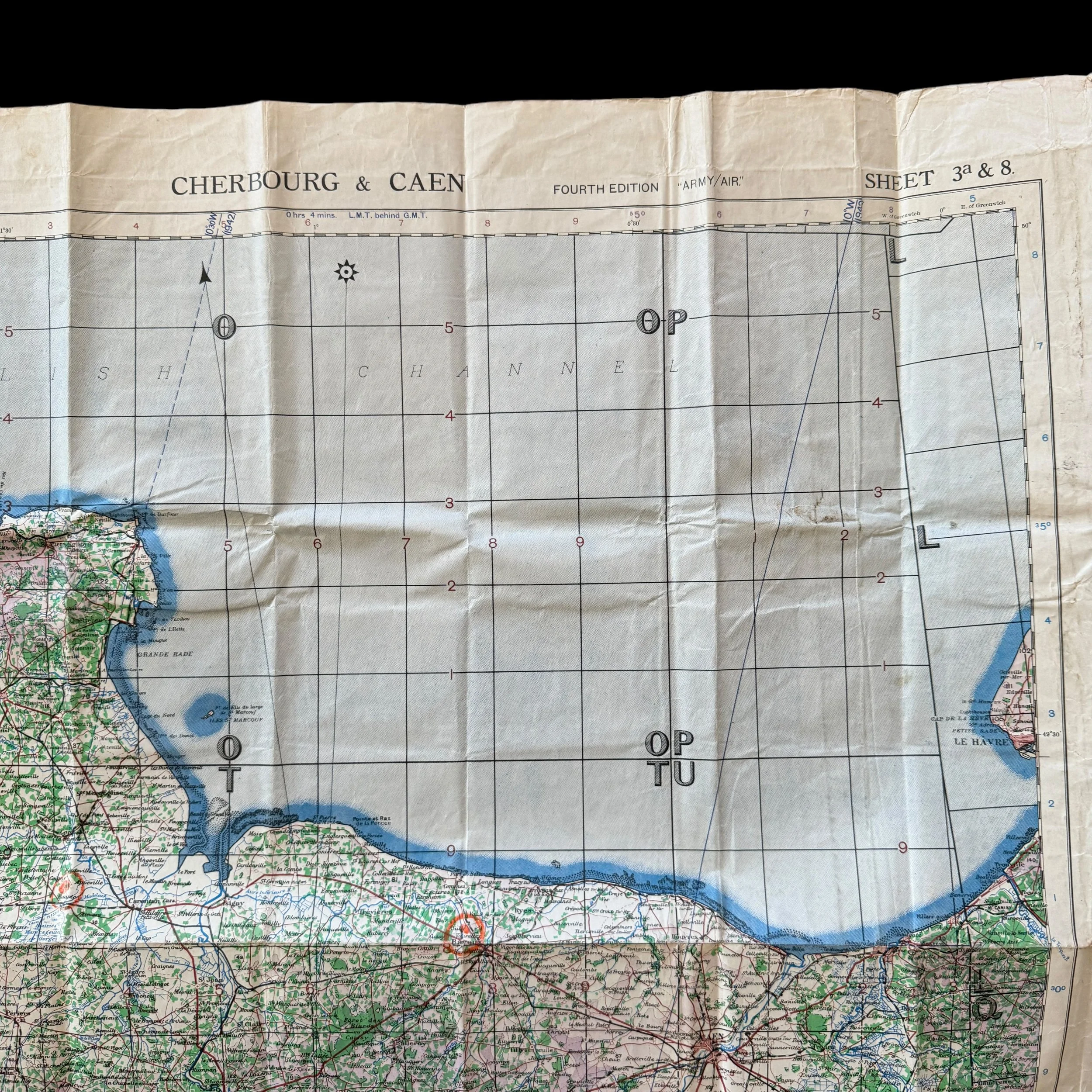
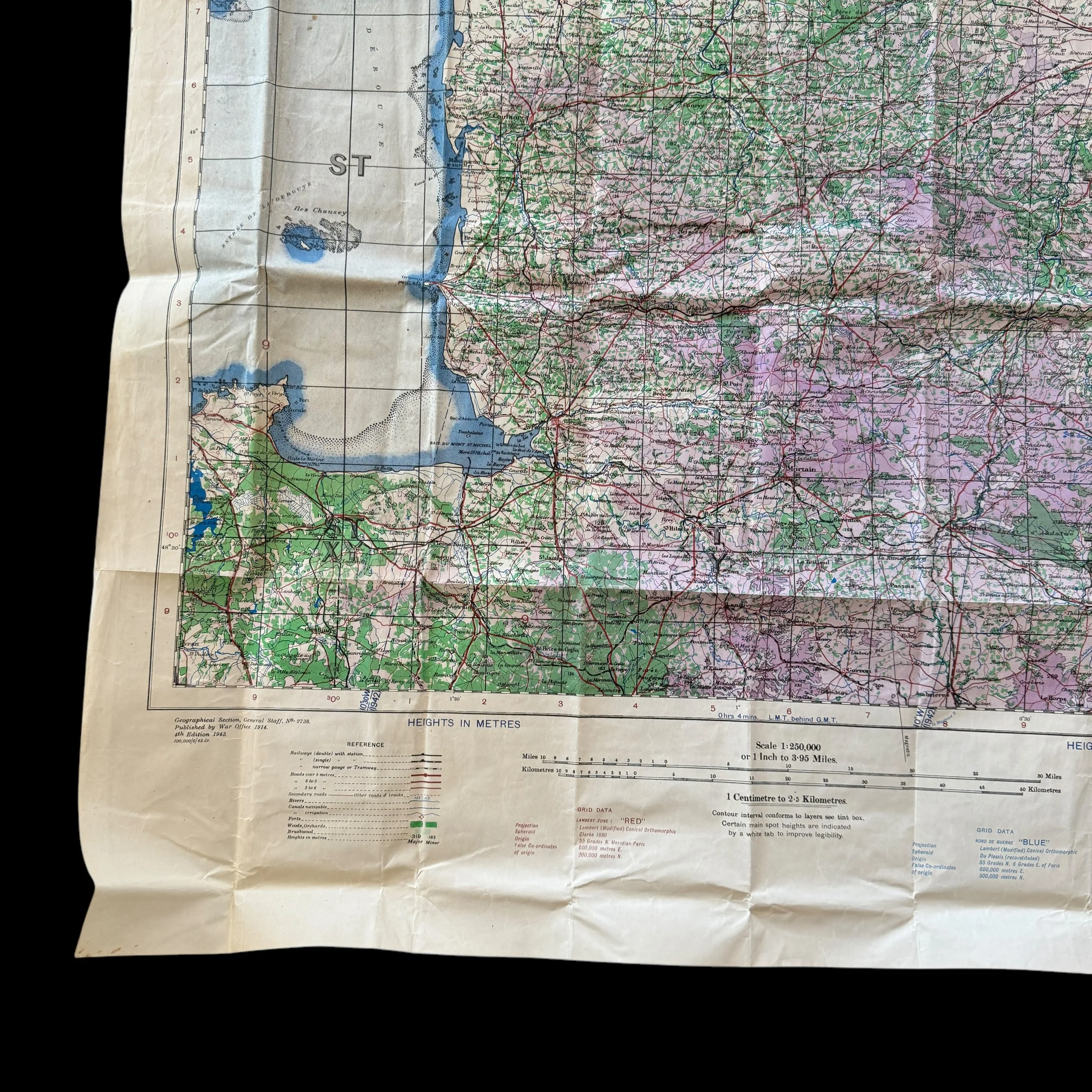
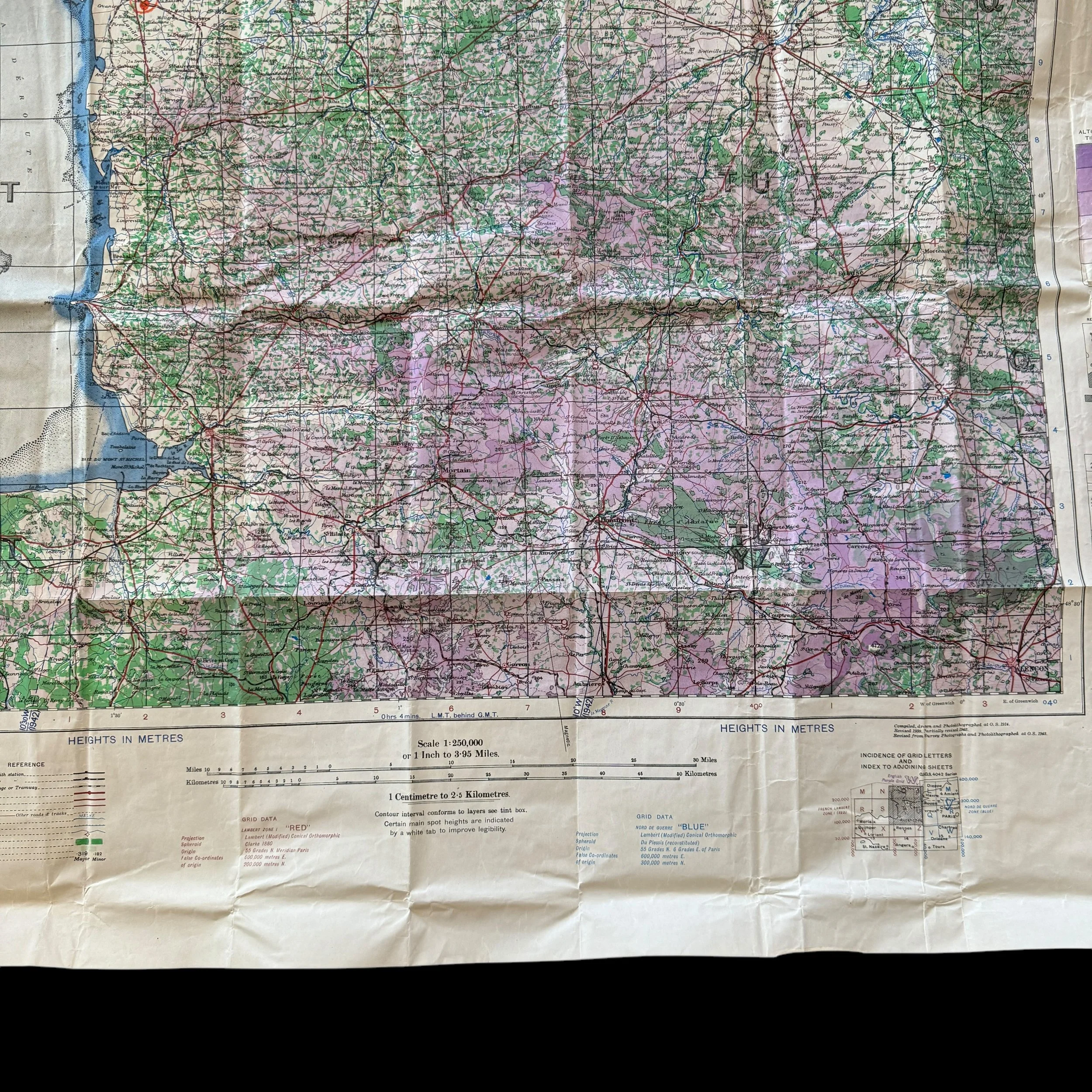
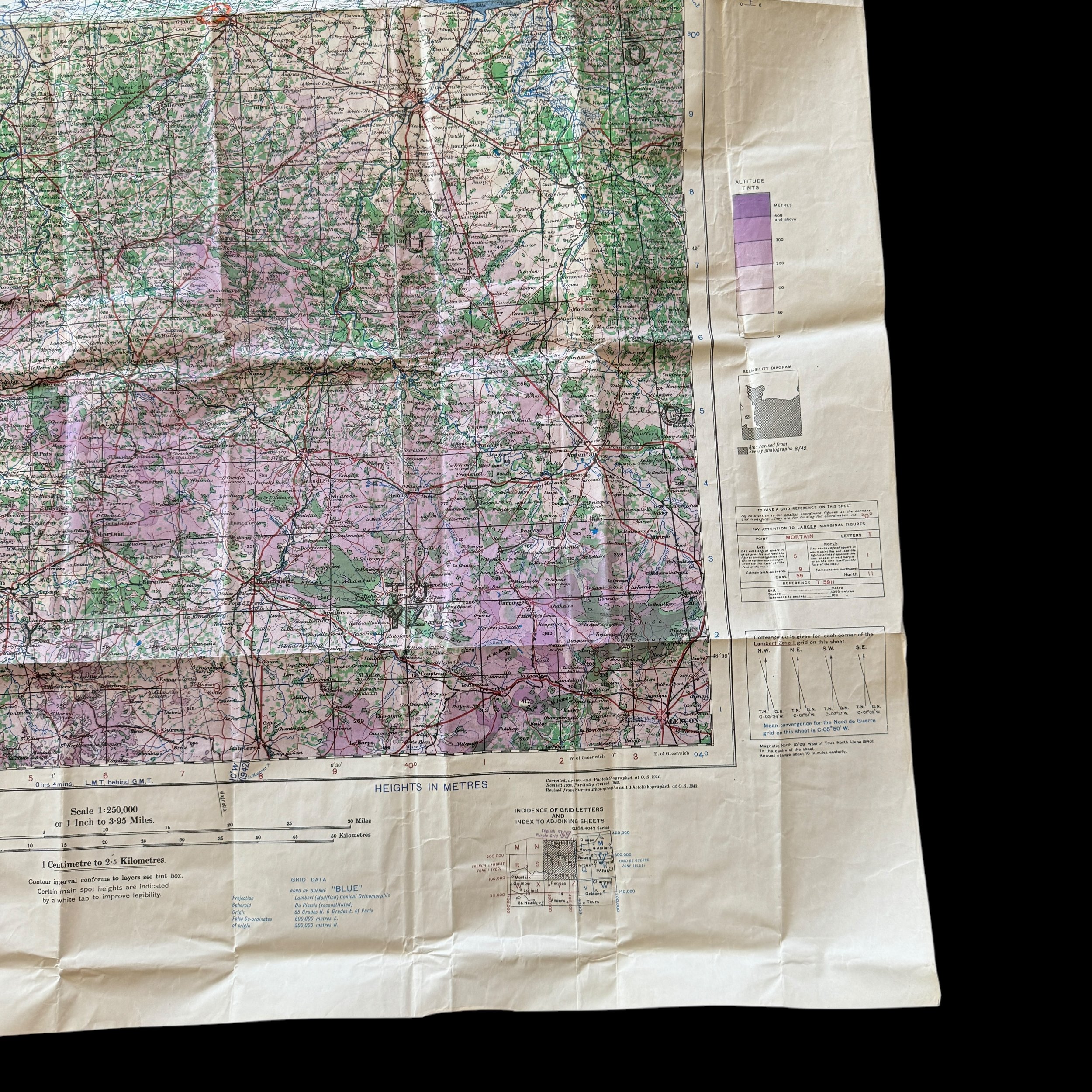

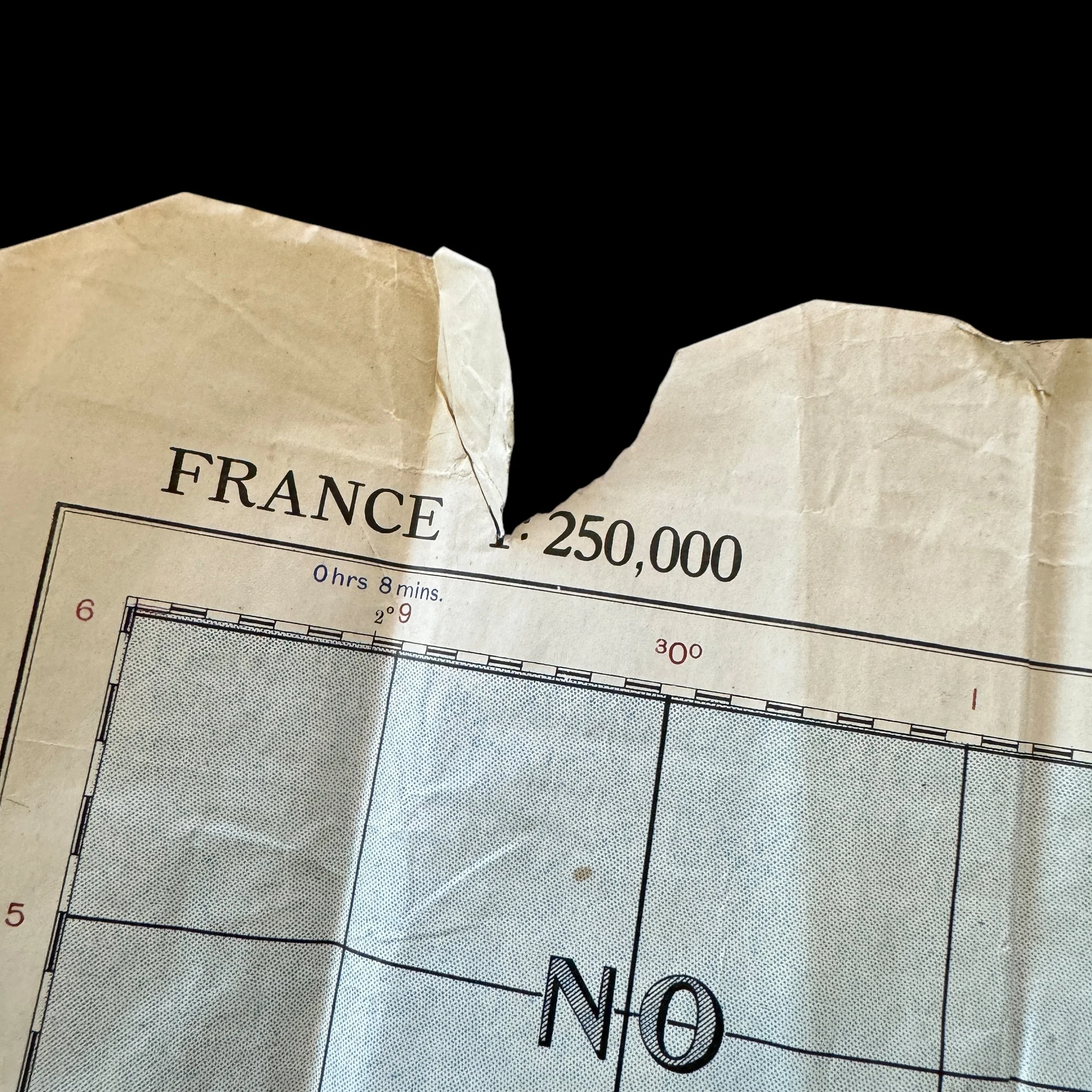
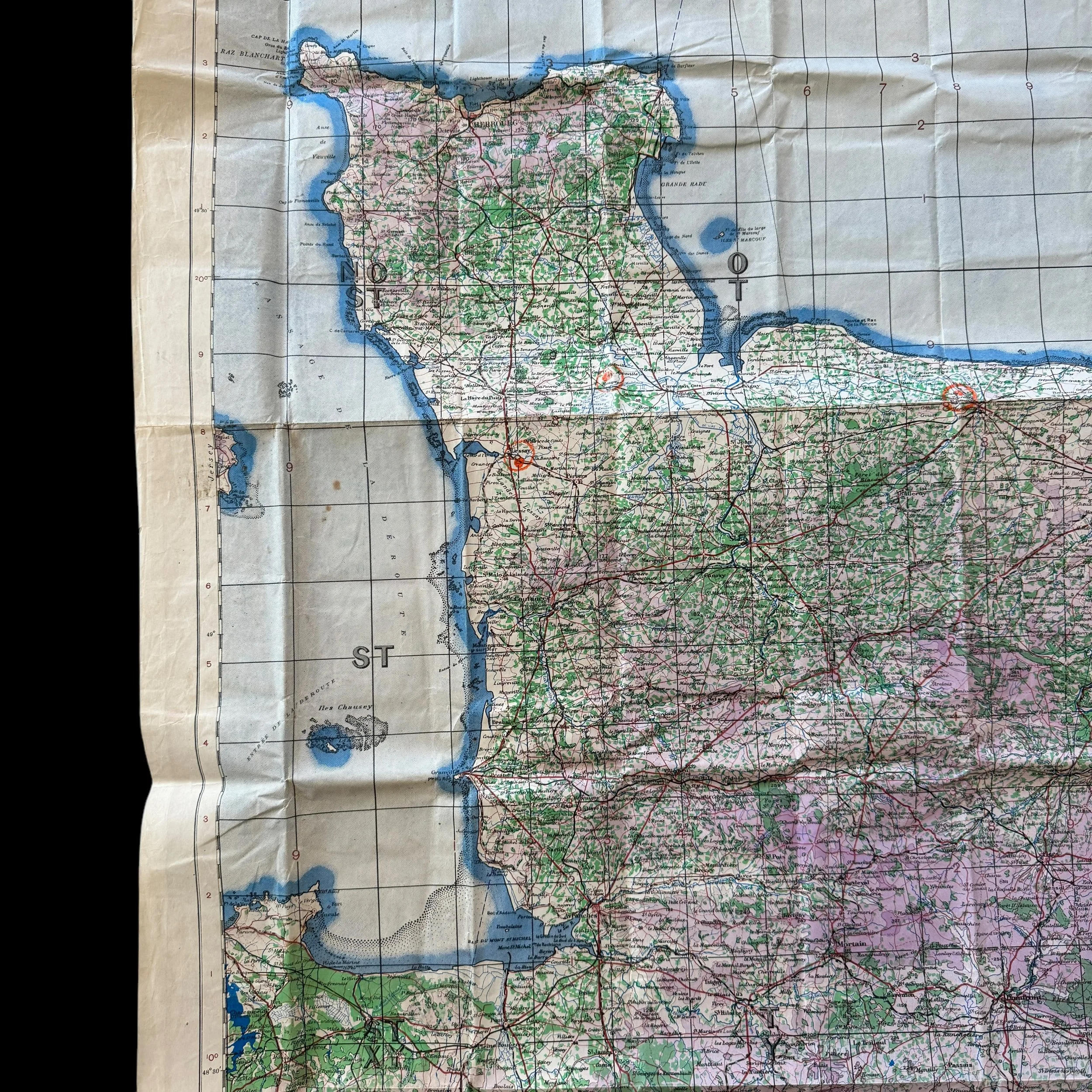

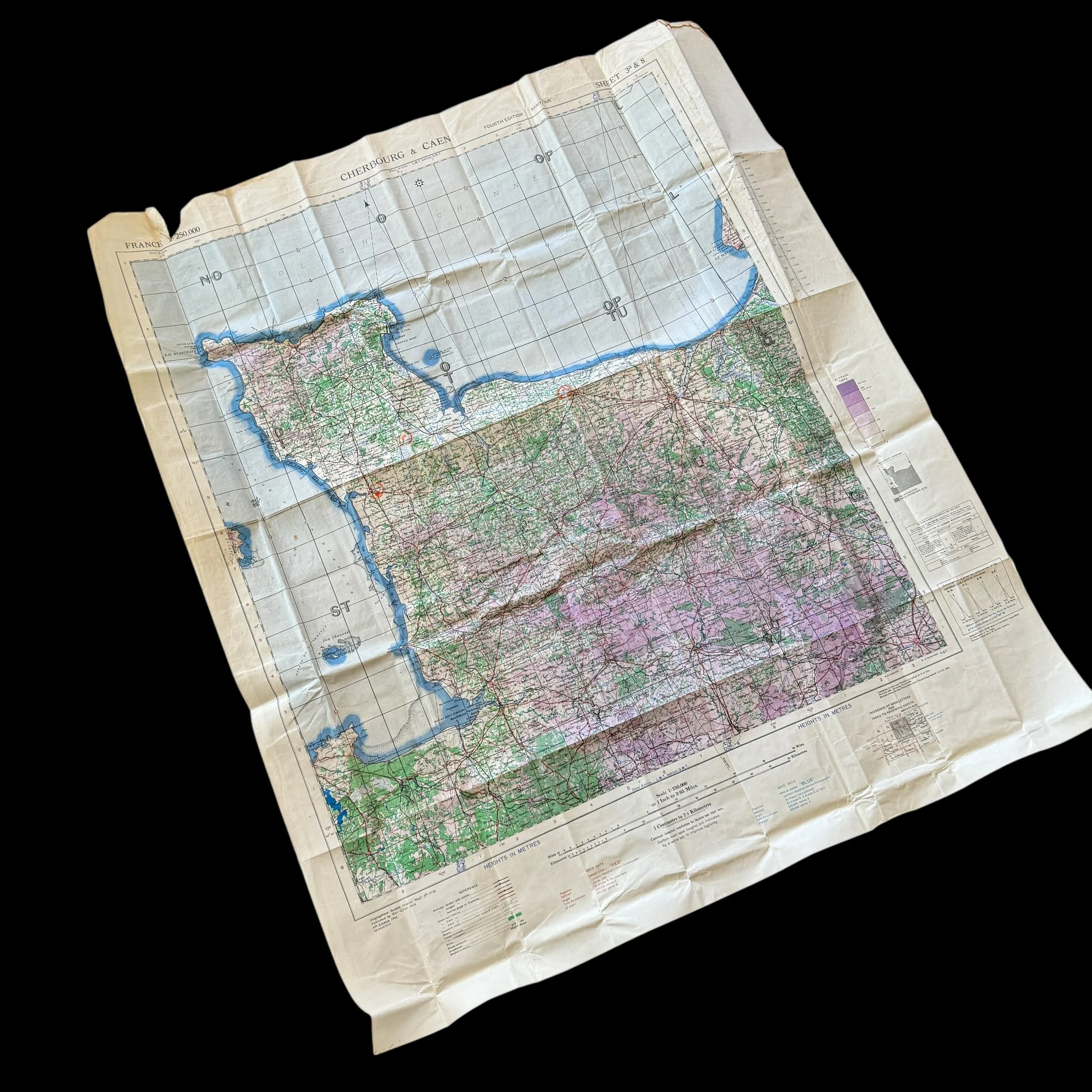
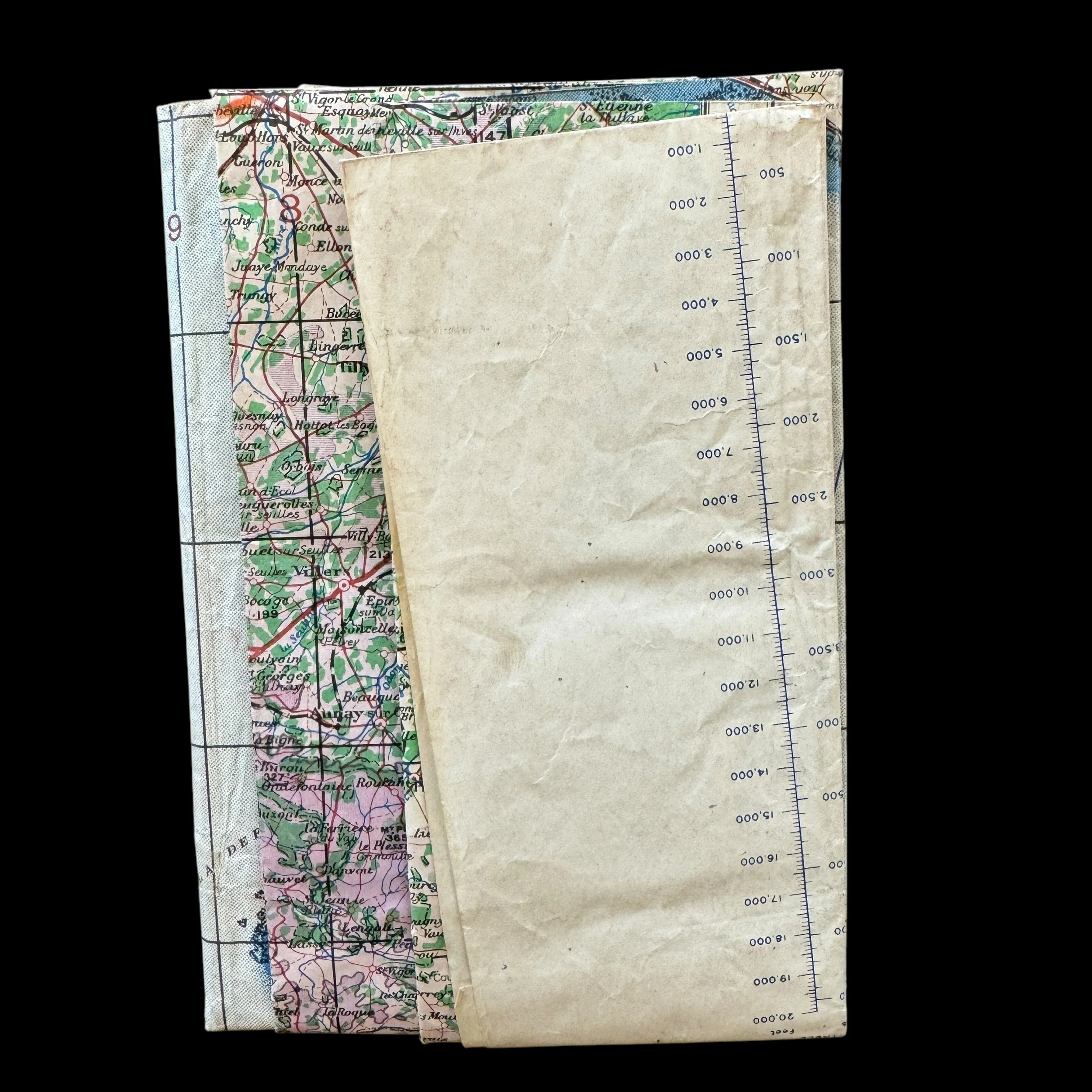
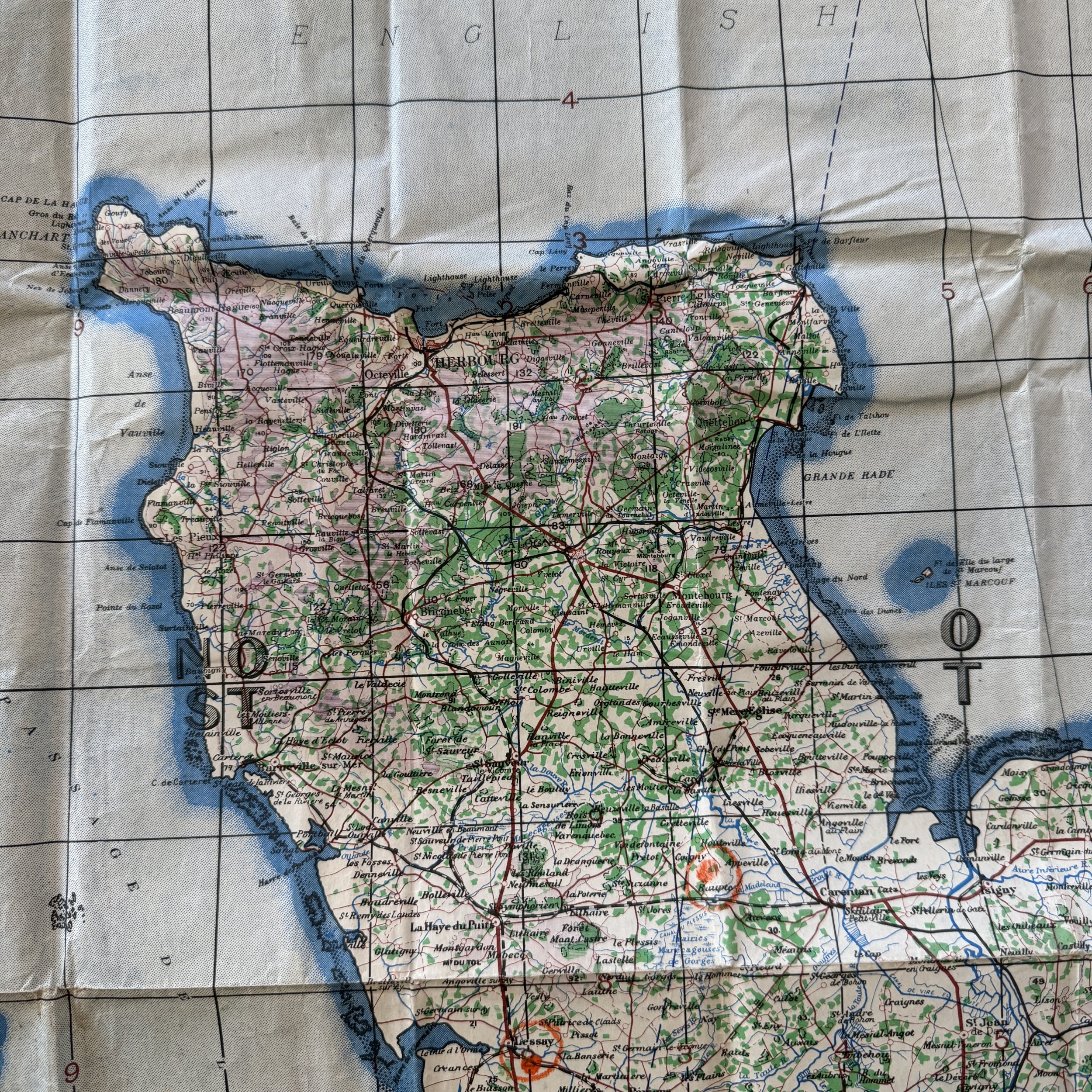
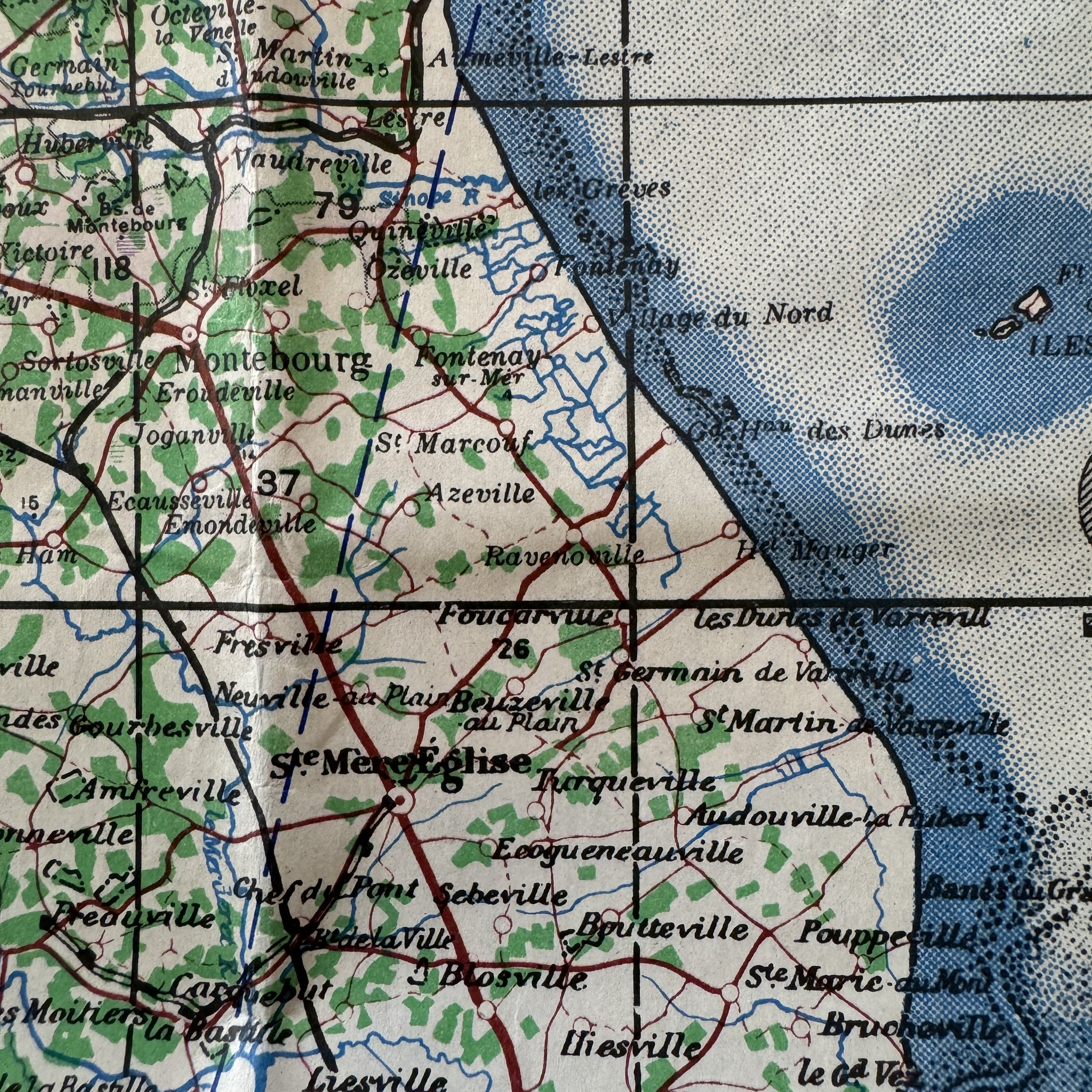

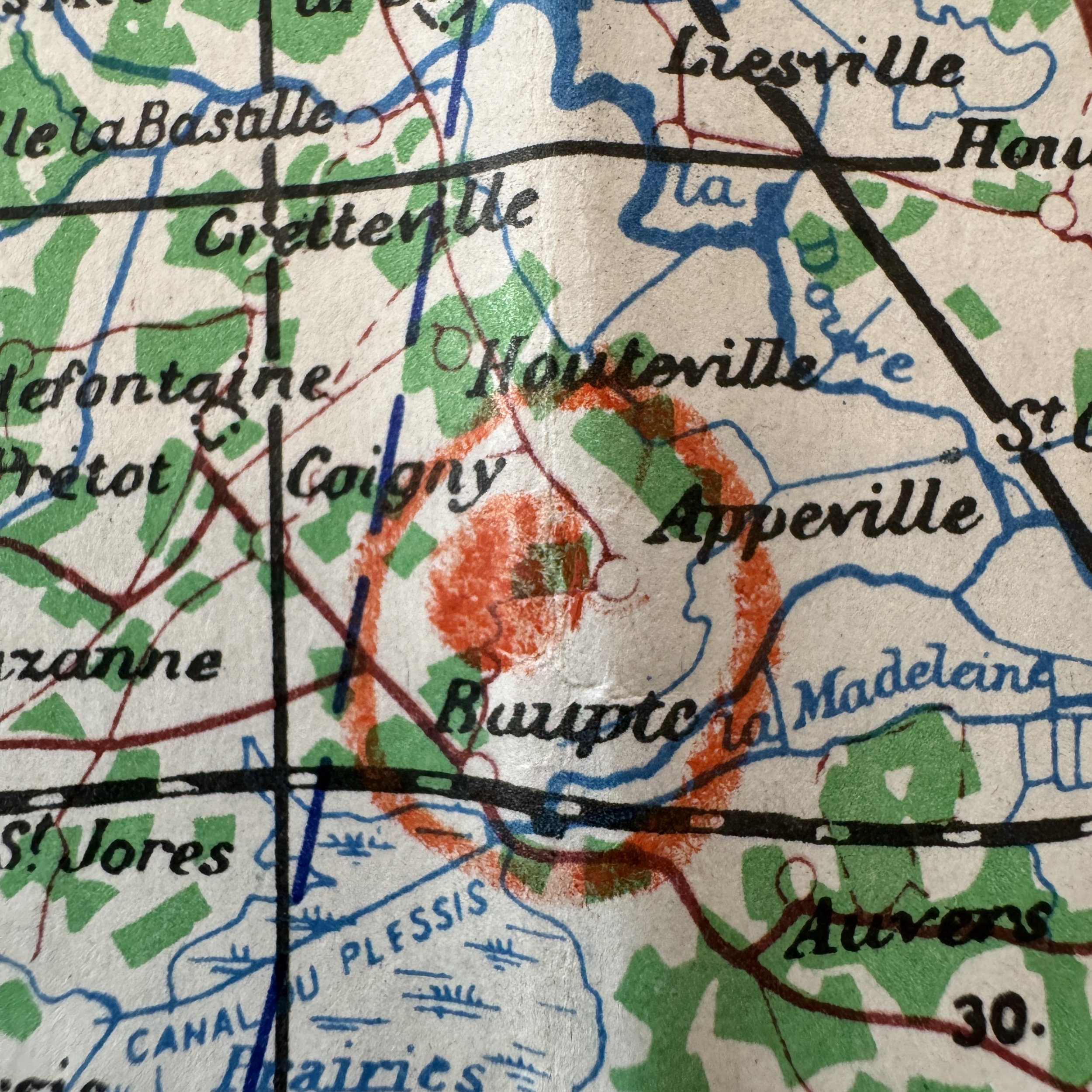
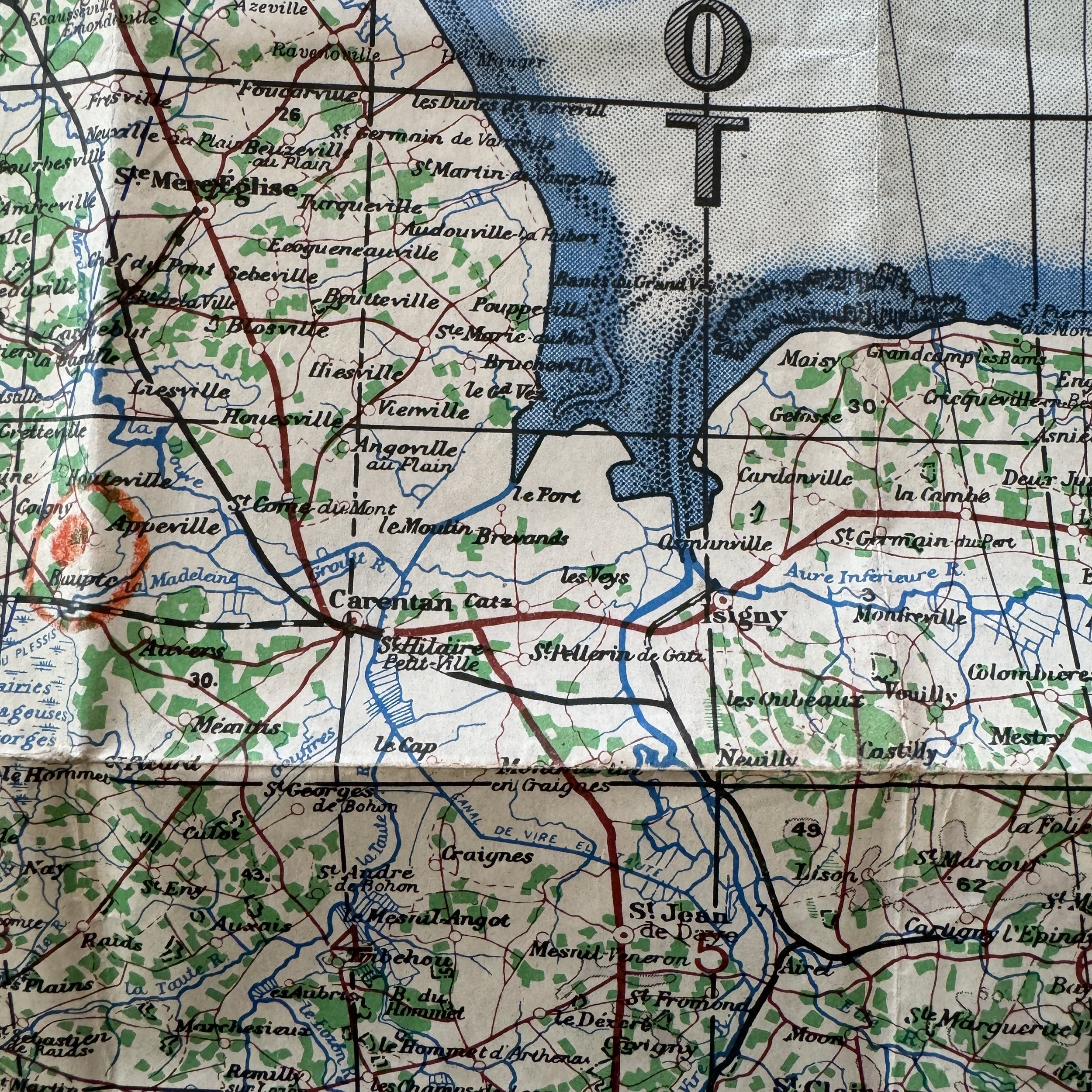
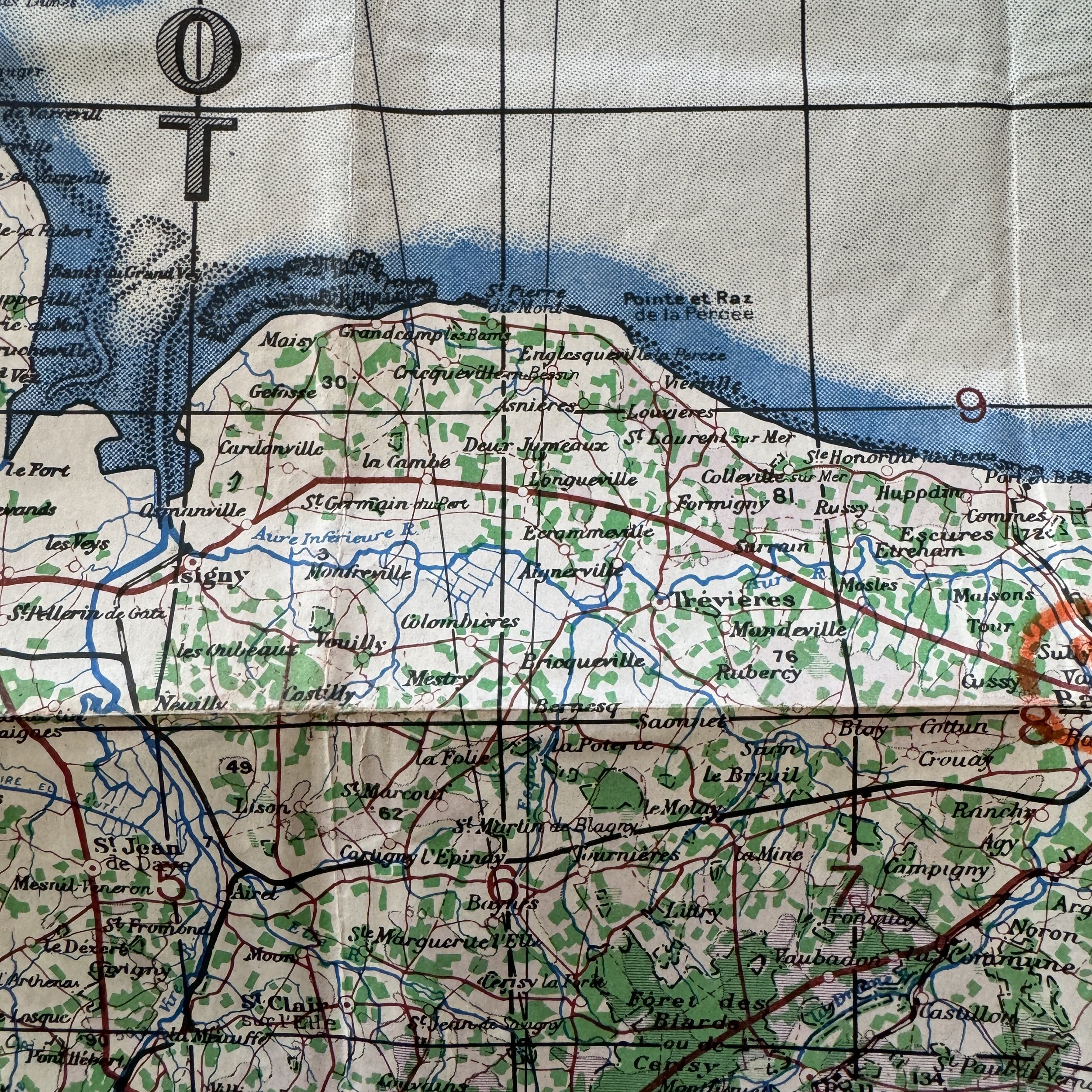

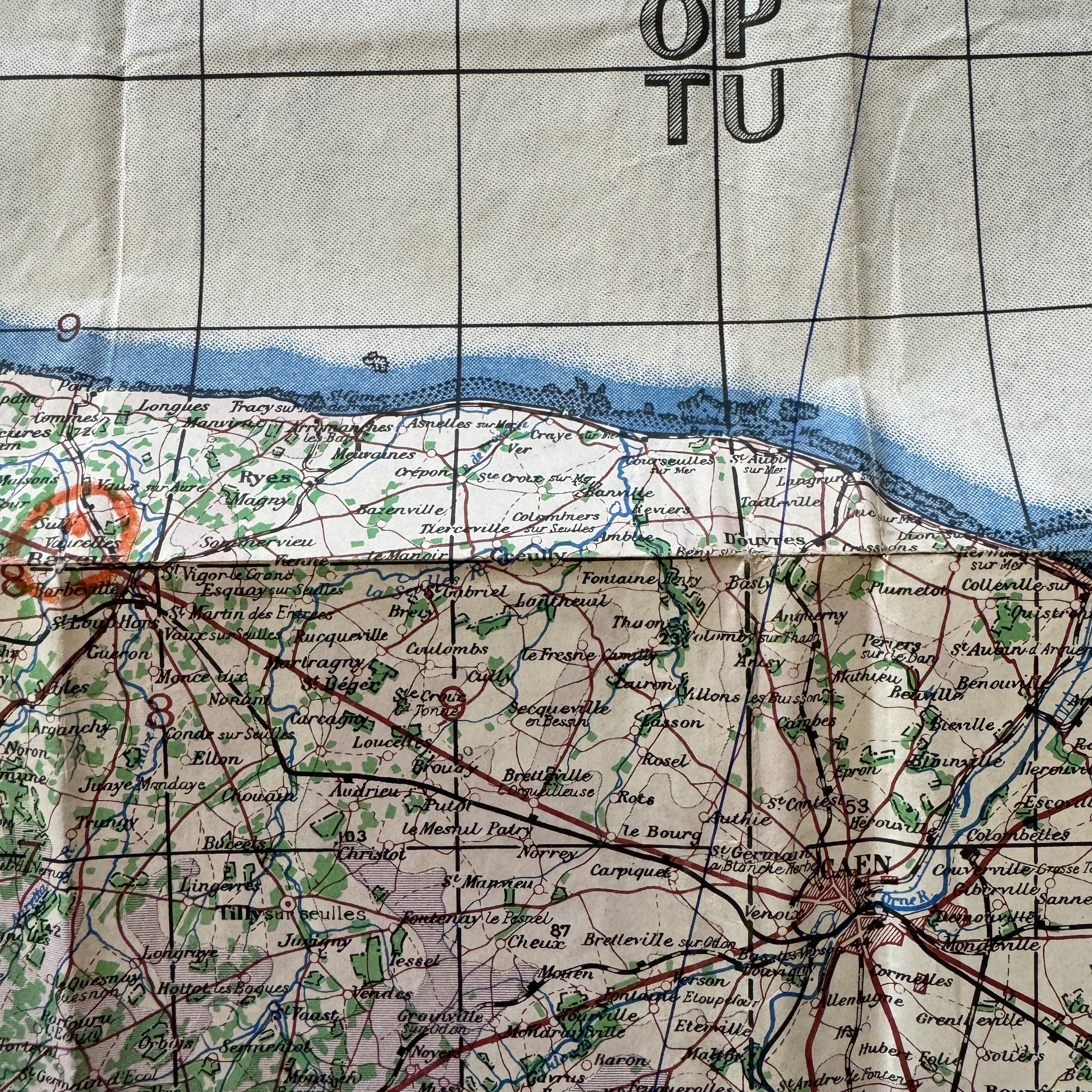



VERY RARE! WWII D-Day "Operation Overlord" U.S. Infantry & Armored Normandy Heavily-Used Combat Map (Hand-Marked Combat Annotation on Bayeux, Coigny, and Lessay)
Comes with a hand-signed C.O.A.
Size: 30.5 × 35.5 inches
*This D-Day map features extremely rare hand-marked combat annotations on the Normandy towns of Bayeux (The First Major Town Liberated by the Allies Near Gold Beach), Coigny (The Fight for the Cotentin Peninsula Near Utah Beach), and Lessay (The Battle for the Breakout Near Omaha and Utah Beach)
This exceptionally rare and original WWII Operation Overlord D-Day invasion map, titled "Cherbourg & Caen," is a remarkable artifact of military history, embodying the extensive strategic planning that was essential to the success of Operation Overlord—the largest amphibious invasion in history. This specific map is a revised fourth edition, a testament to its direct use in the intense and pivotal battles that took place along the Normandy coastline during the Allied assault.
Issued to American infantry and armored officers participating in the initial landings on June 6, 1944, this combat-used Normandy invasion map is one-of-a-kind, featuring hand-drawn combat markings that indicate battlefield movements and strategic positions in key towns, including Bayeux, Coigny, and Lessay. These markings provide a rare, firsthand glimpse into the real-time operational decisions made by Allied commanders as they pressed forward against German forces. The presence of these annotations makes this map an irreplaceable historical artifact, reflecting the chaos and precision of one of history’s most significant military operations.
The map details all five amphibious landing sectors—Utah, Omaha, Gold, Juno, and Sword—where tens of thousands of Allied troops stormed the heavily fortified beaches under relentless enemy fire. Additionally, it highlights the critical 101st and 82nd Airborne drop zones around Sainte-Mère-Église, where American paratroopers were deployed behind enemy lines to disrupt German defenses and secure key crossroads before the main invasion force arrived. These airborne operations were essential to preventing German reinforcements from reaching the beaches and played a decisive role in the success of the landings.
More than just a navigational tool, this battle-worn map played a crucial role in executing the earliest and most critical objectives of the D-Day invasion, aiding Allied forces in their push toward Cherbourg, the securing of beachheads, and the eventual liberation of Normandy from Nazi control. The success of these operations was not just a tactical victory but a turning point in World War II, marking the beginning of the end for Nazi-occupied France and shifting the momentum of the war in favor of the Allies.
The stakes of Operation Overlord could not have been higher. The fate of thousands—indeed, millions—depended on the precision of these maps, which were meticulously designed to provide comprehensive intelligence on the Normandy coastal region. Every road, bridge, and village marked on this map held the potential to alter the course of battle. In the hands of Allied officers, it was not merely a piece of paper, but a blueprint for victory—a guiding instrument that shaped one of the most decisive battles of the 20th century.
The Battles of Bayeux, Coigny, and Lessay: Key Moments in the Normandy Campaign
The liberation of Bayeux marked a significant early success for the Allies following the D-Day landings. Located just inland from Gold Beach, Bayeux was a critical objective for the British 50th (Northumbrian) Infantry Division, which landed on June 6, 1944. The town’s strategic importance lay in its well-developed road network and its proximity to Caen, a heavily defended German stronghold. Unlike many other towns in Normandy that suffered devastating bombardment, Bayeux was liberated with minimal destruction on June 7, 1944, making it the first major town freed by the Allies in France. Supported by Sherman tanks from the 8th Armoured Brigade, British forces secured the town with relatively little resistance, as many German troops had already begun retreating. With Bayeux under Allied control, the town became a vital headquarters for further inland operations, serving as a key staging ground for the push toward Caen and the broader Normandy campaign.
Further west, Coigny played a critical role in the Cotentin Peninsula campaign, which aimed to cut off and capture the strategically essential port of Cherbourg. Located inland from Utah Beach, Coigny and the surrounding countryside became the scene of intense combat as the U.S. 4th Infantry Division, supported by elements of the 90th Infantry Division, advanced through heavily defended German positions. The area was fiercely contested by Fallschirmjäger (German Paratroopers) and troops from the 709th Static Infantry Division, who fought tenaciously to delay the American advance. After nearly three weeks of brutal fighting, the battle culminated on June 28, 1944, when General George S. Patton’s newly arrived 3rd Army helped encircle and defeat the remaining German forces in the Cotentin Peninsula. This victory accelerated the fall of Cherbourg, securing a crucial deep-water port for the Allies and ensuring a steady flow of reinforcements and supplies for the ongoing liberation of France.
In Lessay, positioned between Omaha Beach and Utah Beach, the Allies faced another crucial battle during Operation Cobra, the Normandy breakout offensive in late July 1944. Following weeks of grueling combat in the bocage (hedgerow) terrain, the U.S. 79th Infantry Division, alongside elements of the 90th Infantry Division, launched a determined assault on the town around July 25, 1944. The SS Panzergrenadier units and remnants of the 91st Luftlande Division mounted a stiff resistance, utilizing the natural defenses of the Sèves River to slow the American advance. The fighting was fierce, with both sides suffering heavy casualties, but relentless aerial bombardments and ground assaults eventually forced the German defenders to withdraw. With Lessay secured, the road was finally open for General Patton’s tanks to spearhead the rapid Allied advance into Brittany, marking a turning point in the push to liberate western France and continue the drive toward Paris.
Each of these battles—Bayeux, Coigny, and Lessay—demonstrated the immense coordination between infantry, armor, and air support in the Normandy campaign. These hard-fought victories not only helped secure the foothold gained on D-Day but also set the stage for the final defeat of German forces in France.